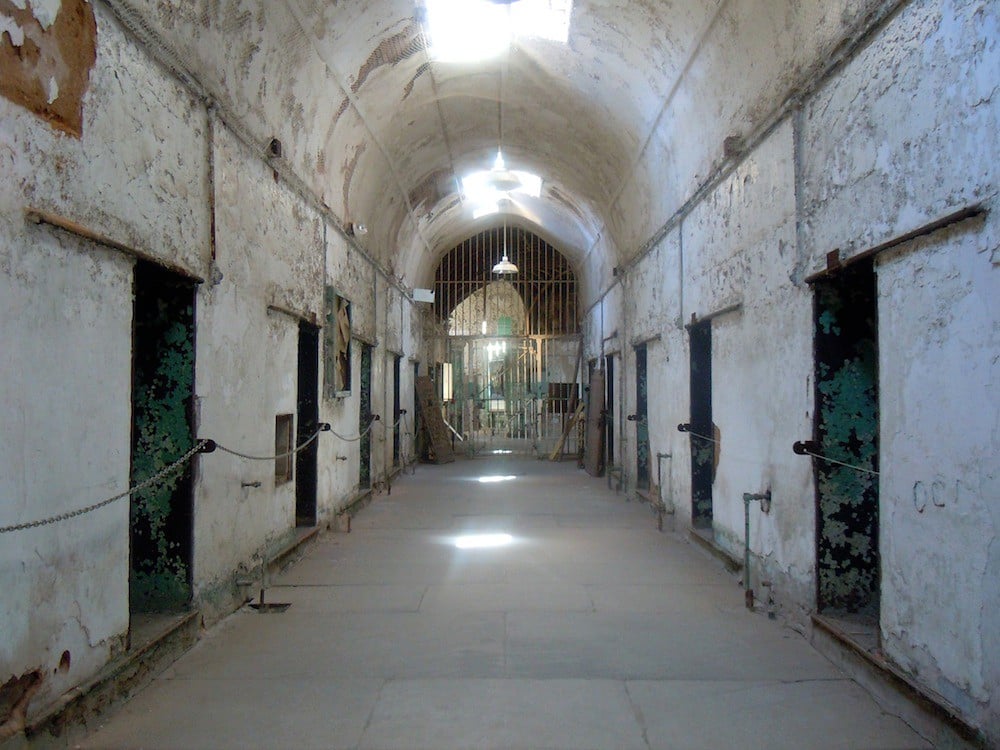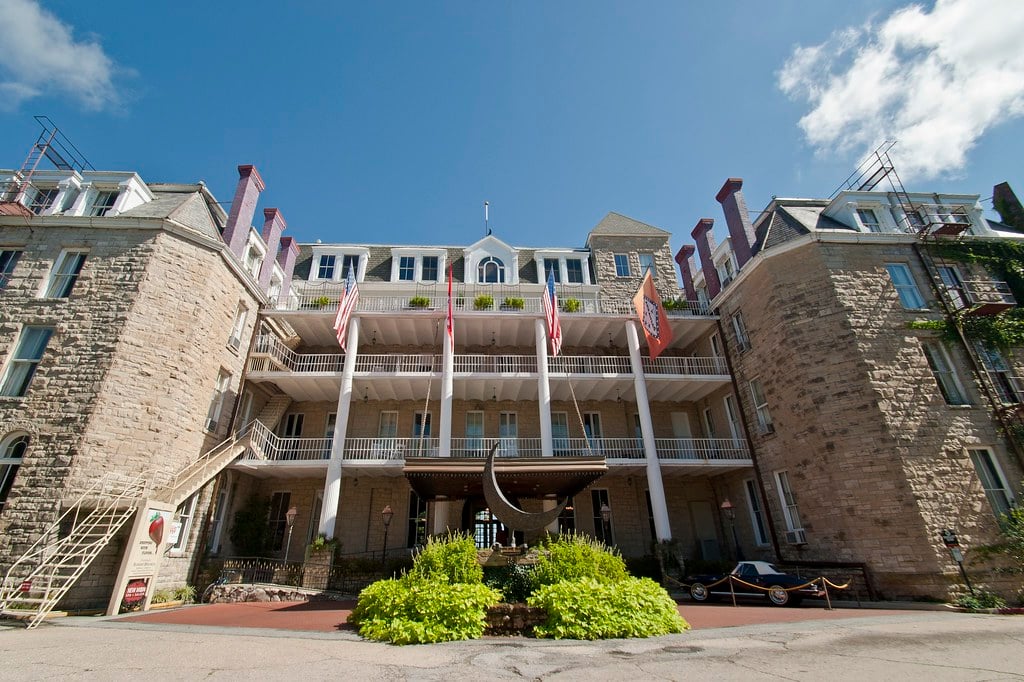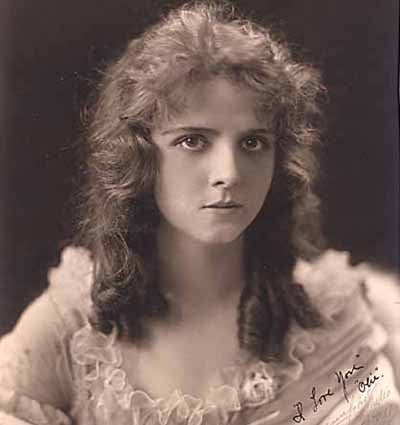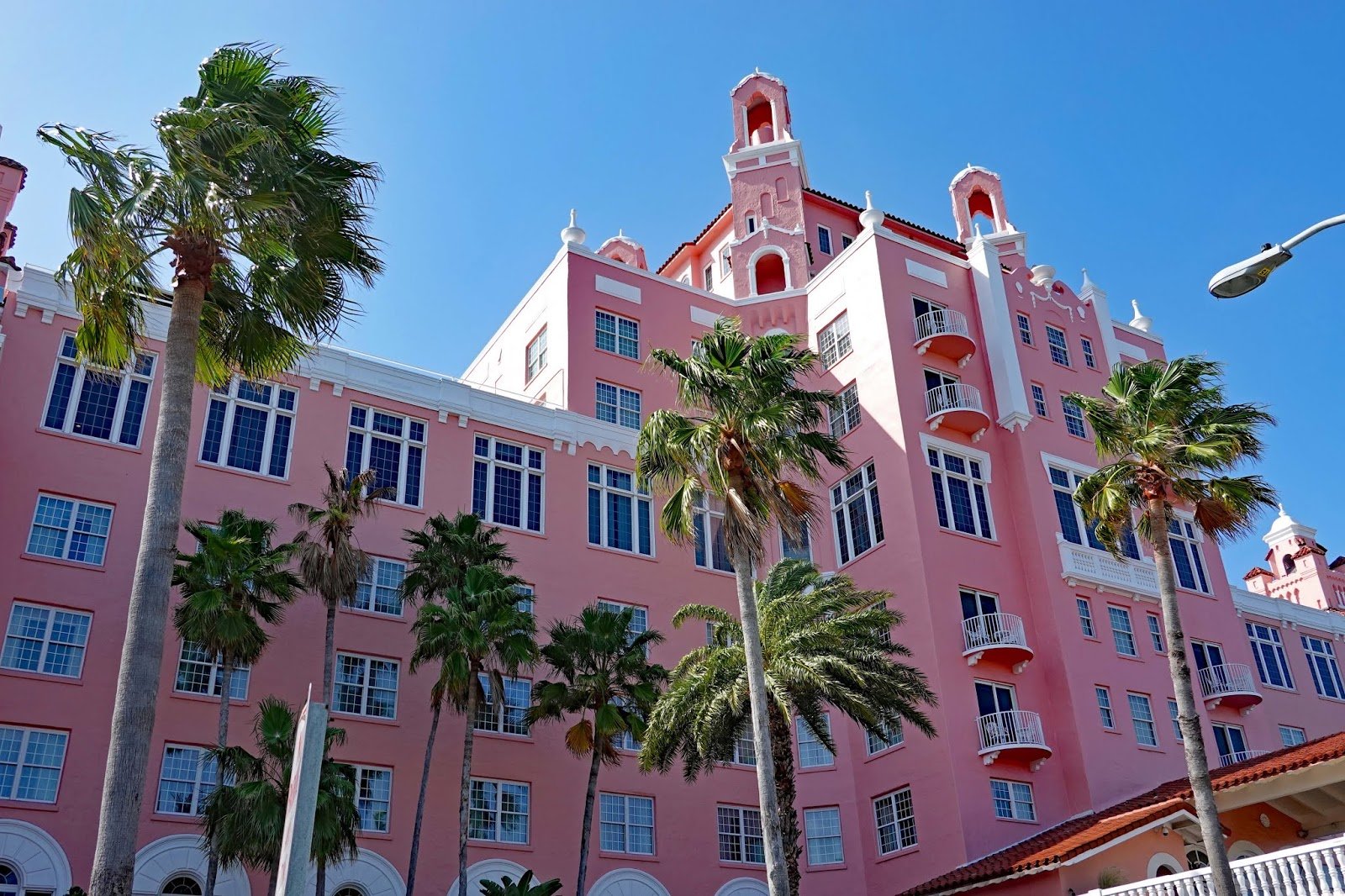Haunted Construction—Ghosts of the Past
Any great feat of construction is not going to be without its problems. Experimental and innovative designs, methods, and materials can cause problems with budget overruns and deadlines. In the case of historical buildings, be it finding new ways to build or the exploitation of construction workers, without our modern laws and regulations, many of America’s notable structures also come with sordid pasts.
For spooky season, we researched America’s most haunted locations and found that some of the most iconic haunted buildings in the U.S. are also some of our country’s construction marvels.
Eastern State Penitentiary, Philadelphia, Pennsylvania
"I am persuaded that those who designed this system... do not know what it is they are doing... I hold the slow and daily tampering with the mysteries of the brain to be immeasurably worse than any torture of the body." -Charles Dickens

Eastern State Penitentiary was the brainchild of Dr. Benjamin Rush, ‘the father of American psychiatry.’ Dr. Rush was one of our country’s founding fathers, a signer of the Declaration of Independence, and a doctor, educator, and politician. Inspired by the Enlightenment thinkers of Europe, he purposed a theory to reform incarceration in 1787 in which he believed prisoners would only be reformed if put in isolation.
John Haviland, a British architect, was chosen to design the penitentiary. The design was the first of its kind, consisting of seven wings of cellblocks stemming from a central core, where 300 inmates would stay in solitary confinement. The penitentiary had central heating and each cell had a flushing toilet and a running water shower—features the White House didn’t even have at the time. It was then the largest building and one of the most expensive structures in the country.
Eastern State Penitentiary opened before completing construction on October 23, 1829. Population growth and changing societal norms and constructs saw an end to solitary for every prisoner in Eastern State by 1913, and by the 1920s, the inmate population had grown so large that construction of new cells, including ones built underground with no electricity, windows, or plumbing, was necessary.
Early prisoners weren’t allowed to speak, were only given a Bible to read, and wore masks. For those who couldn’t follow rules, punishments included the Iron Gag, the Mad Chair—which completely restricted any movement—and a water bath in which inmates were hung on a wall outside after being dunked in ice-cold water.
Doors closed in Eastern State Penitentiary in January 1970, and it was totally abandoned by the mid-1980s. Since 1988, the penitentiary has been open for tours. It is considered by many to be one of the most haunted places in the world.
The 1886 Crescent Hotel and Spa, Eureka Springs, Arkansas

Secluded in the heart of Northwest Arkansas’ Ozark Mountains lays a unique Victorian village called Eureka Springs. The “buildings and houses in the Eureka Springs Historic District are stacked one behind the other, on twenty steep hills divided by nineteen ravines.” Downtown Eureka Springs is listed on the National Register of Historic Places, named one of America’s Dozen Distinctive Destinations by the National Trust for Historic Preservation, and Spring Street has been awarded one of America’s Best Streets by the American Planning Association and Yahoo Travel.
In the late 1800s, people were drawn to the area due to the natural springs which were believed to have healing powers for a wide variety of ailments. Officially founded on July 4, 1879, Eureka Springs quickly became a popular destination for those seeking remedies to physical problems and disease. By 1881, it was the fourth-largest city in Arkansas.
Senator and former Arkansas Governor, Clayton Powell, helped bring the railroad to Eureka Springs. To continue boosting tourism and travel, he also invested in the construction of a luxury hotel called the Crescent Hotel. No expense was spared. To build the Crescent, specialty wagons were made to carry the large pieces of limestone from the White River to the construction site and specialist stonemasons from Ireland were hired to oversee the project. The fireproof hotel was outfitted with Edison lamps, electric bells, a hydraulic elevator, a Waring sewage system, and heated with steam.
According to the Crescent Hotel:
Mr. O'Shawnessey, the spokesman and leader of the imported group, was interviewed by this reporter before his return to Ireland. We recall that "Throughout the many years of his stone working, he has never encountered a stone with such density and quality as the White River Limestone". He predicts it will become a popular building stone in the future and further stated that because of its unique characteristics, the eighteen-inch-thick walls of the Crescent, fitted without the use of mortar, would withstand the destructive forces of time and retain its original beauty for many years to come.
The Crescent Hotel operated from the spring of May 1886 to 1908 when it was converted to the Crescent College and Conservatory for Young Women. In 1934, the school closed, and the hotel was only operational during the summer.
It is in 1937 when Norman G. Baker purchased the property that the Crescent began its journey to becoming one of the country’s most haunted hotels. Baker was an entrepreneur, radio personality, inventor…and self-proclaimed ‘doctor.’ Having fallen into disrepair, Baker fixed up the Crescent as a hospital and “health resort” and used his radio influence to advertise his Formula #5 elixir as a cure for cancer. The elixir was made of corn silk, watermelon seeds, clover, alcohol, glycerol, and carbolic acid. It was injected into the cancerous parts of patients up to seven times a day.
There are rumors that Baker did more experiments on his patients but there is no proof of that. Records indicated that 44 people died while staying at The Baker Cancer Hospital, with claims from loved ones that an additional 100 more people died while after being “treated” there. However, one wing, ‘The Asylum’ was made for dying patients where Baker kept them in isolation because he did not want any word to get out that his ‘miracle’ cure didn’t work.
As far as proof of Baker experimenting on people, no one will probably ever know, but in 2019, employees of the Crescent Hotel unearthed 500 specimen bottles, a bone saw, and a 60-mm film all meticulously and purposely buried. Keith Scales, the hotel’s ghost tour manager said, “Some of the bottles are medicines and some of the bottles are medical specimens of what he claimed were tumors that he had taken out of his patients, put in alcohol, or formaldehyde and kept in bottles as evidence that his cure was working."
The Crescent Hotel has been restored to its original grandeur and offers walking guided ghost tours. If you want to stay, it is reported that rooms 212, 218, and 419 experience the most paranormal activity.
New Amsterdam Theatre, New York City, New York

The oldest remaining operating theatre on Broadway is the New Amsterdam Theatre constructed in 1902-1903 by the New York City Economic Development Corporation for producers Klaw and Erlanger and designed by Henry Herts and Hugh Tallent.
According to Wikipedia, “The New Amsterdam Theatre was among the first non-high-rise buildings in New York City with a steel superstructure.” The fireproof frame consists of 270,000 steel pieces which required over 7,500 drawings to design. The building was heated, cooled, and included a vacuum air cleaning system.
It opened with A Midsummer Night’s Dream on October 26, 1903, but The New Amsterdam was mostly noted for the Ziegfeld Follies, produced by Klaw and Erlanger, which ran from 1913 to 1927. The Ziegfeld Follies was a series of shows mixing vaudeville and variety-style shows. Encylopedia.com describes the Ziegfeld Follies: “Between 1907 and the early 1930s, the Ziegfeld Follies was the most spectacular and famous American revue…" One of the Follies top attractions was its elaborately costumed chorus girls, the Ziegfeld Girls.
 The most infamous of the Ziegfeld Girls was model, silent-film actress, and first Vargas Girl, Olive Thomas. Her sudden death in 1920 was one of Hollywood’s first celebrity scandals. Reportedly, Olive and her actor husband, Jack Pickford, took a second honeymoon to Paris while their marriage was on the rocks/to try to mend a marriage. After a night of partying on September 5, 1920, Olive picked up Jack’s bottle of mercury bichloride, a topical solution used to treat Jack’s syphilis sores, and drank it—dying five days later.
The most infamous of the Ziegfeld Girls was model, silent-film actress, and first Vargas Girl, Olive Thomas. Her sudden death in 1920 was one of Hollywood’s first celebrity scandals. Reportedly, Olive and her actor husband, Jack Pickford, took a second honeymoon to Paris while their marriage was on the rocks/to try to mend a marriage. After a night of partying on September 5, 1920, Olive picked up Jack’s bottle of mercury bichloride, a topical solution used to treat Jack’s syphilis sores, and drank it—dying five days later.
Though Jack swears it was accidental, saying “Olive and I were the greatest pals on Earth. Her death is a ghastly mistake," many theorized Olive’s death was not accidental at all but either suicide or murder.
Olive has allegedly been haunting the New Amsterdam since her death. Employees and patrons report seeing Olive dressed in a beaded green dress and holding a blue bottle. Some say that Olive even spoke to them. Lights flicker and Dana Amendola, Vice President of Operations at Disney Theatrical Group (who owns the theatre now) says she’s heard tap dancing when no one is in the building and that a stack of DVDs went flying across the room when employees were questioning Olive’s stardom of the silent film era. Security and ushers say they are sometimes touched on the back when no one is behind them.
The New Amsterdam Theatre website reads, “Olive’s friendly soul has made a permanent home in a place she loved, the New Amsterdam Theatre. She has been spotted gliding across the stage as she did in life, blowing kisses to an invisible audience.”
Photos of Olive are now strategically placed at all the entrances of the New Amsterdam. Employees are fond of saying “hello” and “goodnight” to Olive. Many say she’s the most active ghost on Broadway.
The New Amsterdam is currently the home of Disney’s musical Aladdin which has been running since 2014.
Don CeSar Hotel, St. Petersburg, Florida

The construction of the Don CeSar is a horror story in and of itself. Young real estate entrepreneur, Thomas Rowe, set out to build a “pink castle” in tribute to his deceased lover, Lucinda. For $100,000, Thomas purchased 80 acres of beach-side land on St. Pete, Florida to build his luxury hotel.
The original design by architect Henry Dupont was a six-story structure with 110 ensuite rooms but during construction…and here comes the scary story…the hotel grew to 220 rooms and ended up 300 percent over budget!
One of the unique structural elements of the Don CeSar is its floating concrete pad and pyramid footings which contractor Carlton Beard devised to prevent the hotel from sinking into the sand. To this day, the Don CeSar hasn’t shifted or settled.
Opening its doors on January 16, 1928, the Don CeSar became a favorite of celebrities and elites like F. Scott Fitzgerald, Al Capone, Lou Gehrig, and President Franklin D. Roosevelt. It even housed the New York Yankees baseball team during spring training.
But in 1940, Thomas Rowe died suddenly of a heart attack in the lobby of the Don CeSar. Dying without a will, Thomas’ estranged wife, Mary, inherited the hotel and it fell into disrepair. The U.S. Army purchased the hotel in 1942 for use as a hospital and convalescent center for World War II soldiers. After the war, the Don CeSar became the regional headquarters of the Department of Veteran’s Affairs. The government abandoned it in 1969.
In 1972, owner William Bowman began restoring the Don CeSar and reopens the hotel in 1973. It was placed on the National Register of Historical Places in 1974, named the only historic resort on Florida’s Golf Cost by the National Trust’s Historic Hotels of America in 1989, and awarded the Best Historic Hotel by Historic Hotels of America in 2015.
With it being a war hospital for a time, one would think the ghost stories of the Don CeSar would be sad and tragic; however, those who report sightings of apparitions say they see a man dressed in a white suit wearing a Panama hat wandering the hotel’s grounds greeting people. Staff say they see Thomas with Lucinda wearing a traditional Spanish dress at the hotel’s fountain and hear knocking on the fifth floor where Thomas lived. They also say doors will swing open by themselves for staff carrying food trays and suitcases.
Some staff and guests report feeling uneasy in areas of the hotel and have seen ghosts wearing clothing more modern than the roaring 20s. Haunted Rooms writes, “Some of the activity that’s experienced is put down to the time when the building was used as a VA hospital during the 1940s, and it’s the restless spirits of these patients that can sometimes be felt.”
The Don CeSar is now a 4-diamond beach resort and spa with an award-winning seafood restaurant.
Old buildings, seem inherent to come with ghost stories. Some more benevolent than others.
Hauntings can draw curious tourists and positive attention from the media; however, in some cases, benevolent spirits can cause massive problems, especially during repairs and restorations—which paranormal investigators say can rouse those spirits residing in these historical locations.
Being stuck with ghosts of the past can be a blessing or a curse. Sometimes things can be fixable. Sometimes, things can’t. If you’ve reached the point where your old software is disrupting your daily life by the unexplained activity of your legacy systems, it’s time to start restoring your process and become that 4-diamond, “house beautiful,” “The Grand Ol’ Lady of The Ozarks” that you can be. DESTINI Estimator is the best ghost buster when it comes to estimating software. (See what we did there?)

-1.png?width=112&height=112&name=image%20(4)-1.png)















